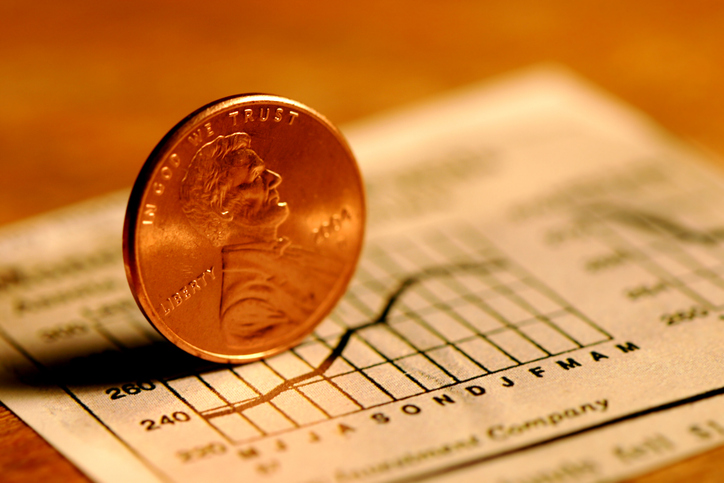Dollar Tree Stock Sinks As "Macro Pressures" Impact Consumer Spending
Dollar Tree stock is plunging Wednesday after the discount retailer missed Q2 expectations and slashed its full-year outlook. Here's what you need to know.


Dollar Tree (DLTR) stock is spiraling in Wednesday's session after the dollar-store chain missed top- and bottom-line expectations for its second quarter and slashed its full-year outlook.
In the 13 weeks ended August 3, Dollar Tree's revenue increased 0.7% to $7.4 billion, helped by a 0.7% improvement in same-store sales growth. Its earnings per share (EPS) decreased 26.4% from the year-ago period to 67 cents.
The "vast majority" of the earnings slump was "attributable to an adjustment of our general liability accrual, a portion was attributable to a comparable-store-sales shortfall which reflected the increasing effect of macro pressures on the purchasing behavior of Dollar Tree's middle- and higher-income customers," said Dollar Tree Chief Financial Officer Jeff Davis in a statement.
From just $107.88 $24.99 for Kiplinger Personal Finance
Become a smarter, better informed investor. Subscribe from just $107.88 $24.99, plus get up to 4 Special Issues

Sign up for Kiplinger’s Free Newsletters
Profit and prosper with the best of expert advice on investing, taxes, retirement, personal finance and more - straight to your e-mail.
Profit and prosper with the best of expert advice - straight to your e-mail.
The results came up short of analysts' expectations. Wall Street was anticipating revenue of $7.5 billion and earnings of $1.04 per share, according to Yahoo Finance.
As a result of its weak performance in the first half and "a more conservative sales outlook at Dollar Tree for the balance of the year," the company cut its full-year outlook.
It now anticipates revenue in the range of $30.6 billion to $30.9 billion, comparable-store sales growth in the low-single-digits and earnings per share to arrive between $5.20 to $5.60.
This compares with Dollar Tree's previous outlook of revenue in the range of $31 billion to $32 billion, comparable-store sales growth in the low-to-mid-single digits, and earnings per share of $6.50 to $7.00.
Is Dollar Tree stock a buy, sell or hold?
Similar to its peer Dollar General (DG), which recently suffered its worst day ever after earnings, Dollar Tree has struggled on the charts this year, down 54% so far. Yet, Wall Street remains bullish on the consumer staples stock.
According to S&P Global Market Intelligence, the average analyst target price for DLTR stock is $131.13, representing implied upside of roughly 100% to current levels. Meanwhile, the consensus recommendation is a Buy. However, analysts may very well revise their ratings and price targets lower following the earnings miss and reduced guidance.
Financial services firm UBS Global Research is one of the more bullish outfits on DLTR stock with a Buy rating and $155 price target.
“We believe the DLTR story remains compelling," said UBS analyst Michael Lasser in an August 29 note.
Lasser says there are several potential catalysts for Dollar Tree, including it being a beneficiary to moderating inflation or deflation in some categories, its rollout of higher shelves and merchandising resets, its expansion of multi-price assortment, and an improvement in profitability from its portfolio review of its Family Dollar brand.
However, the analyst adds that "the market probably won't recognize these favorable attributes until estimates stop moving lower."
Related Content
Profit and prosper with the best of Kiplinger's advice on investing, taxes, retirement, personal finance and much more. Delivered daily. Enter your email in the box and click Sign Me Up.

Joey Solitro is a freelance financial journalist at Kiplinger with more than a decade of experience. A longtime equity analyst, Joey has covered a range of industries for media outlets including The Motley Fool, Seeking Alpha, Market Realist, and TipRanks. Joey holds a bachelor's degree in business administration.
-
 The Stoic Retirement: Ancient Wisdom for Today's Reality
The Stoic Retirement: Ancient Wisdom for Today's RealityA "Stoic retirement" doesn't mean depriving yourself. It's a character-based approach to life and aging that can bring calm and clarity.
-
 My Teen Crashed His Car and Now Our Insurance Has Tripled. What Now?
My Teen Crashed His Car and Now Our Insurance Has Tripled. What Now?Dealing with the costly aftermath of a teen car accident is stressful. Here are your options for navigating it.
-
 11 Outrageous Ways To Spend Money in Retirement
11 Outrageous Ways To Spend Money in RetirementWhether you have excess cash to spend or want to pretend, here’s a look at 11 ridiculous ways retirees can splurge.
-
 I'm a Financial Planner for Millionaires: Here's How to Give Your Kids Cash Gifts Without Triggering IRS Paperwork
I'm a Financial Planner for Millionaires: Here's How to Give Your Kids Cash Gifts Without Triggering IRS PaperworkMost people can gift large sums without paying tax or filing a return, especially by structuring gifts across two tax years or splitting gifts with a spouse.
-
 'Boomer Candy' Investments Might Seem Sweet, But They Can Have a Sour Aftertaste
'Boomer Candy' Investments Might Seem Sweet, But They Can Have a Sour AftertasteProducts such as index annuities, structured notes and buffered ETFs might seem appealing, but sometimes they can rob you of flexibility and trap your capital.
-
 AI Stocks Lead Nasdaq's 398-Point Nosedive: Stock Market Today
AI Stocks Lead Nasdaq's 398-Point Nosedive: Stock Market TodayThe major stock market indexes do not yet reflect the bullish tendencies of sector rotation and broadening participation.
-
 Got $100 to Gamble? These Penny Stocks Could Be Worth the Ride
Got $100 to Gamble? These Penny Stocks Could Be Worth the RideVolatile penny stocks are high-risk plays with potentially high rewards. If you have $100 you can afford to lose, these three names are worth a look.
-
 Quick Question: Are You Planning for a 20-Year Retirement or a 30-Year Retirement?
Quick Question: Are You Planning for a 20-Year Retirement or a 30-Year Retirement?You probably should be planning for a much longer retirement than you are. To avoid running out of retirement savings, you really need to make a plan.
-
 Don't Get Caught by the Medicare Tax Torpedo: A Retirement Expert's Tips to Steer Clear
Don't Get Caught by the Medicare Tax Torpedo: A Retirement Expert's Tips to Steer ClearBetter beware, because if you go even $1 over an important income threshold, your Medicare premiums could rise exponentially due to IRMAA surcharges.
-
 I'm an Insurance Pro: Going Without Life Insurance Is Like Driving Without a Seat Belt Because You Don't Plan to Crash
I'm an Insurance Pro: Going Without Life Insurance Is Like Driving Without a Seat Belt Because You Don't Plan to CrashLife insurance is that boring-but-crucial thing you really need to get now so that your family doesn't have to launch a GoFundMe when you're gone.
-
 Dow Adds 646 Points, Hits New Highs: Stock Market Today
Dow Adds 646 Points, Hits New Highs: Stock Market TodayIt was "boom" for the Dow but "bust" for the Nasdaq following a December Fed meeting that was less hawkish than expected.